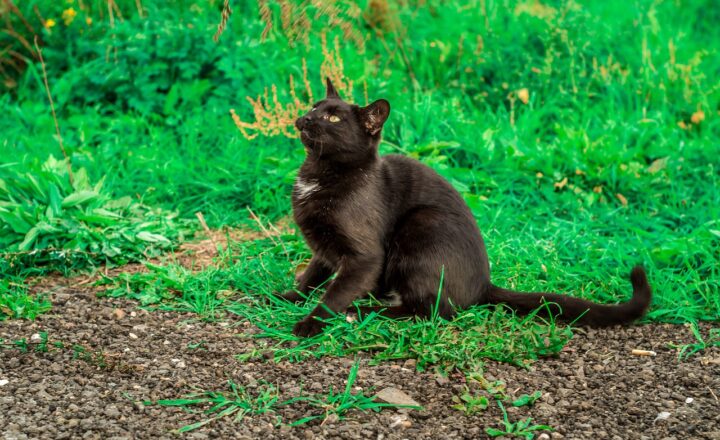Why Some People See Ghosts and the Science Behind Paranormal Experiences
November 16, 2024

The world of the paranormal is filled with intrigue, mystery, and a substantial share of skepticism. One of the most compelling areas of interest within this field is the phenomenon of ghost sightings. Reports of apparitions and encounters with the supernatural have existed for centuries, often striking fear or fascination in those who experience them.
But what exactly leads some individuals to see ghosts? In this article, we will delve into the various scientific explanations for these encounters, explore psychological factors at play, and examine cultural influences that shape our understanding of ghosts.
1. Understanding Ghosts: A Historical Perspective
Ghosts have haunted human imagination throughout history, documented in ancient civilizations such as the Egyptians, Greeks, and Romans. These spectral figures were often seen as souls of the departed, lingering due to unfinished business or desires for revenge. The very word “ghost” comes from the Old English “gast,” meaning spirit or breath. Over time, ghost stories morphed in response to cultural shifts, often mirroring societal fears or collective anxieties.
Understanding ghosts starts with acknowledging their historical significance across cultures. Many traditions incorporate beliefs surrounding spirits or the afterlife. For instance, in Mexican culture, the Day of the Dead honors deceased loved ones, celebrating their presence rather than invoking fear.
2. Psychological Factors: The Mind’s Influence
Seeing ghosts often stems from psychological influences. Various cognitive and emotional factors impact the way we perceive our environment. Here are some key elements:
- Pareidolia: This psychological phenomenon involves recognizing familiar patterns, such as faces or figures, in random stimuli. Many ghost sightings can be attributed to pareidolia, as individuals may interpret shadows, reflections, or even textures in a way that suggests a ghostly presence.
- Sleep Paralysis: A state between wakefulness and sleep can lead to hallucinations. Individuals experiencing sleep paralysis may perceive a presence in their room, often described as a ghost, leading to feelings of dread and fear.
- Trauma and Grief: Those dealing with significant loss may experience encounters with loved ones. Grieving individuals sometimes project their emotions onto their environments, attributing feelings or experiences to spirits of the deceased.
- Confirmation Bias: People may have a preconceived belief in ghosts, leading them to interpret ambiguous experiences as evidence supporting their belief. When they sense something unusual, they are likely to conclude it’s a ghost, neglecting alternative explanations.
These psychological factors highlight how susceptibility to ghost sightings may originate from our minds grappling with complex emotions and interpretations.
3. Environmental Factors: The Impact of Space and Surroundings
Several environmental conditions can enhance the likelihood of ghost sightings:
- Infrasound: Sounds below the range of human hearing can affect our perceptions. Research indicates that exposure to infrasound may induce feelings of anxiety, unease, or even hallucinations, potentially leading to ghostly encounters.
- Lighting Conditions: Dimly lit areas activate our primal instincts and may lead individuals to misinterpret shadows or movement as spiritual beings. Poor visibility can play tricks on the mind, heightening senses and creating hallucinations.
- Temperature Changes: Cold spots are commonly associated with ghost sightings. Scientists speculate that rapid temperature drops may be caused by drafts, which result in psychosomatic responses, making people feel watched or cold, potentially leading them to believe they’re encountering a spirit.
These environmental influences further explain how certain conditions can create a setting ripe for supernatural experiences.
4. Cultural Perspectives: The Role of Belief Systems
Cultural beliefs unquestionably shape our perceptions. Different societies view ghosts through unique lenses:
- Folklore and Mythology: Many cultures have rich folklore about spirits that influence individuals’ beliefs about ghosts. Whether through literature, oral traditions, or media portrayals, these stories can reinforce societal views around the supernatural.
- Religious Beliefs: Many religions encompass beliefs about the afterlife and spirits. For example, in Christianity, the concept of the soul’s journey can influence how individuals perceive ghostly encounters.
- Media Influence: The rise of paranormal television shows and films can heighten interest in ghostly phenomena, setting expectations that resonate in viewers’ minds. This might unconsciously prime people to interpret their experiences as paranormal.
Cultural narratives not only shape individual beliefs but also contribute to group experiences surrounding ghost sightings.
5. Paranormal Research: What the Studies Show
Several scientific studies have investigated the paranormal and ghost sightings. For instance, psychologists have documented how sleep deprivation, physical health, and emotional stress affect one’s propensity to experience ghost phenomena. Meanwhile, sociologists examine how collective experiences can lead to shared beliefs in ghosts, shaping community identities and interactions.
In one notable study, researchers uncovered that people claiming to have experienced ghosts often had underlying psychological or emotional difficulties that predisposed them to interpret ambiguous stimuli as supernatural. Other studies stress the role of suggestibility related to cultural narratives that frame everyday experiences within an otherworldly context.
Ultimately, the ongoing intersection between science and paranormal experiences drives intriguing dialogue and exploration of the unverifiable but perpetually fascinating idea of ghosts.
Conclusion: Bridging the Gap Between Science and the Supernatural
While ghost sightings remain contentious, invoking skepticism and fascination, the exploration of their causes continues. By combining psychological understanding, environmental influences, and culture’s impact on perceiving the supernatural, we can navigate the murky waters where science meets folklore.
Developing a rational understanding of the mind’s power, the influence of our surroundings, and the cultural narratives we embrace can enrich our comprehension of ghostly experiences. After all, whether ghosts exist may be less significant than our collective interpretation and belief in these phenomena, which connect us to our deepest fears, hopes, and histories.
The next time you hear a story of ghostly encounters or experience something similar in your life, consider the multitude of factors that may contribute to that perception—each woven into the very fabric of humanity’s vast and colorful narrative surrounding the supernatural.








